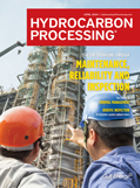Piping
Safety: Addressing corrosion at petrochemical plants starts with carbon
Maintaining the structural integrity of a pipeline is a significant investment of time and resources for organizations in the oil and gas industry.
Mitigate transient/hydraulic surge in liquid pipelines with nozzle check valves
Liquid pipelines often come across hydraulic transients, which can damage pipelines and associated equipment (i.e., pumps, valves, stations, etc.).
Supply Chain: How to reduce piping inventory
Piping represents a significant part of the plant cost, ranging from 15%–25%.1 Materials stored in warehouses or storage facilities cost companies in terms of personnel, materials, time, space, insurance, risk, etc. This article proposes cost-saving strategies for inventory reduction. Further, it emphasizes consistent naming conventions to avoid creating duplicate/redundant items.
Piping and instrument diagrams (P&IDs): Part 2—Causes and management of change
It is difficult to categorize or group the many reasons for routine or late changes to a P&ID. Some causes are listed here.
Causes of reduced or stopped flow in controlled-volume pumps
Controlled-volume (CV) pumps, also known as metering or dosing pumps, are designed to deliver a small quantity of fluid at a precise rate with relatively high pressure.
Refinery tower inspections: Discovering problems and preventing malfunctions
A previous survey identified installation mishaps to be one of the top five causes of tower malfunctions.
Demineralized water system design: Considerations for the petrochemical industry—Part 1
Site utility leads, engineers and other professionals in the hydrocarbon/chemical processing industries (HPI/CPI) are facing a perfect storm of increasing demineralized water demand, end of life of existing demineralized water plant equipment, changing source water quality, corporate directives to diversify water sources, and pressure from regulators and community stakeholders to minimize the volume of waste generated from water treatment.
Solve PRV and piping capacity problems—Part 1
Engineers often uncover problems or inadequacies with pressure relief valve (PRV) and relief system piping capacities that need creative and cost-effective solutions.
Reliability: Strainers and thoughtful testing: Piping initiatives worth considering
In two separate cases, foresight in the use of strainers on piping and following proper procedures for hydrostatic testing are recommended to preserve the integrity of offshore platforms.
Fluid Flow: Energy markets, product improvements drive growth in the global flowmeter market
The size of the global flowmeter market has followed the upward and downward fluctuations in oil prices and is now on an upward trajectory, according to a new study by Flow Research that provides total global market shares of the major suppliers of each flowmeter technology (except sonar and optical) by 2018 revenues.

- INEOS completes purchase of LyondellBasell's EO&D facility in Bayport, Texas (U.S.) 5/2
- HPLNG delays commissioning of Chhara LNG import terminal in India 5/2
- Shell records nearly $8-B Q1 profit on the back of refining, chemicals/products and LNG divisions 5/2
- Equinor selects Aker for Mongstad refinery upgrade project 5/1
- Australian researchers testing SAF production from landfill gases 5/1
- ACC responds to U.S. EPA's final risk management rule for methylene chloride 5/1




